How Do You Manage the Tools and Equipment in the Garage?
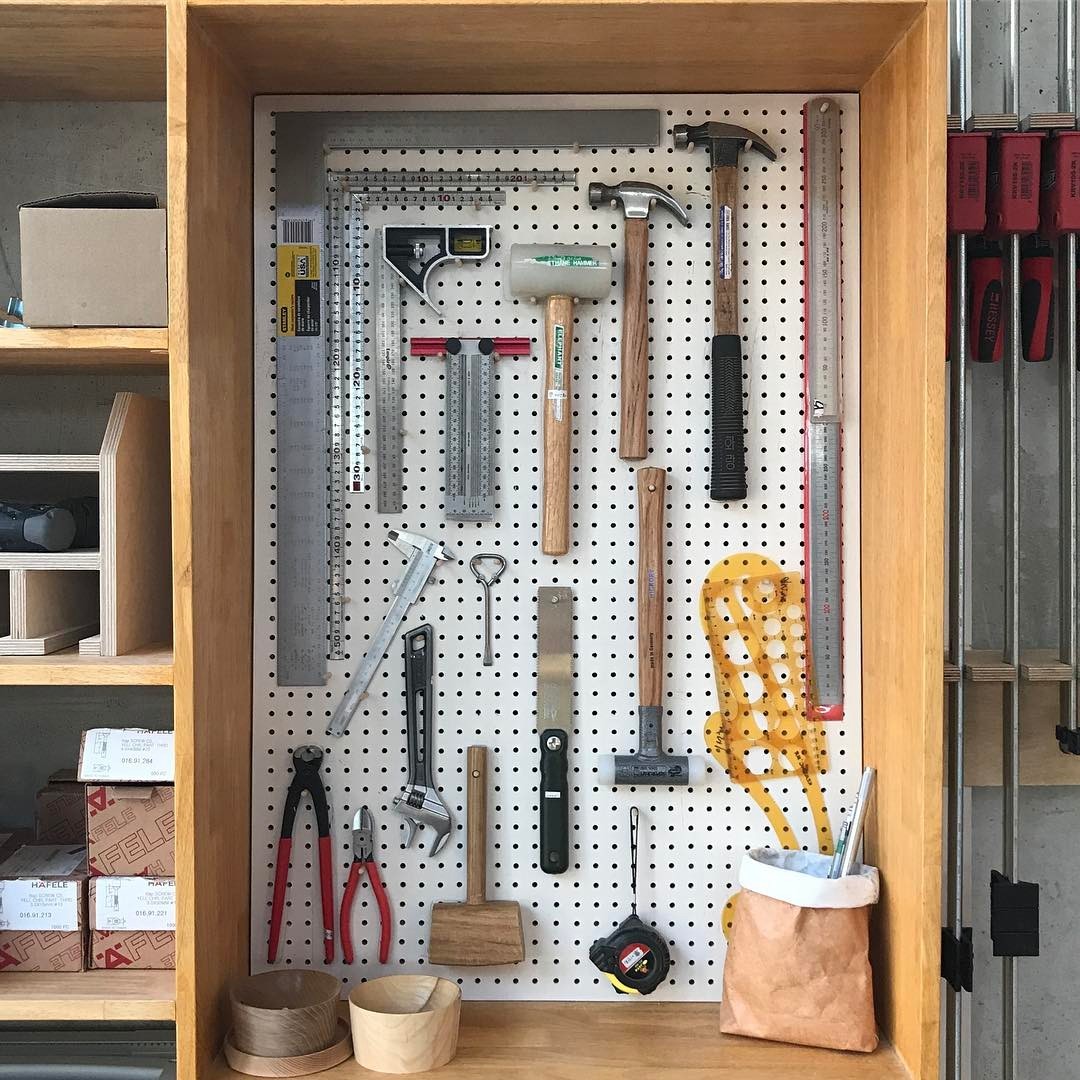
Managing tools and equipment in a garage effectively involves a combination of smart storage solutions, regular maintenance, and organized systems. CARDIAGTECH.NET understands the importance of having a well-organized garage for both DIY enthusiasts and professional mechanics alike. This article will explore practical strategies to optimize your garage space, ensure your tools are always in top condition, and enhance your overall efficiency. Proper tool and equipment management not only saves time and reduces frustration but also extends the lifespan of your valuable assets.
1. Why Garage Tool and Equipment Management is Essential
Effective management of tools and equipment in your garage is crucial for several reasons.
- Increased Efficiency: A well-organized garage saves time. Instead of searching for tools, you can quickly locate what you need, boosting productivity.
- Cost Savings: Proper storage protects tools from damage and rust. Regular maintenance ensures they function optimally, reducing the need for frequent replacements.
- Safety: Cluttered garages can be hazardous. Organizing tools and equipment minimizes trip hazards and prevents accidents.
- Space Optimization: Efficient storage solutions maximize the use of your garage space, making room for vehicles and other activities.
- Professionalism: For professional mechanics, a tidy and well-equipped garage enhances your reputation and client confidence.
2. Understanding Your Garage Space and Needs
Before implementing any organizational system, assess your garage space and identify your specific needs.
2.1. Evaluate Your Space
- Measure Dimensions: Determine the length, width, and height of your garage. Note any obstructions like windows, doors, or support beams.
- Assess Existing Storage: Identify current storage solutions, such as shelves, cabinets, or wall-mounted racks. Evaluate their effectiveness.
- Identify Problem Areas: Pinpoint areas prone to clutter, such as corners, workbenches, or floors.
2.2. Determine Your Needs
- Inventory Your Tools and Equipment: List all tools and equipment, categorizing them by type and frequency of use.
- Consider Future Needs: Anticipate future tool acquisitions and plan for additional storage space.
- Define Work Zones: Identify areas for specific tasks, such as automotive repairs, woodworking, or gardening.
2.3. Space Analysis Statistics
| Space Type | Average Area (sq ft) | Typical Use |
|---|---|---|
| Single Car Garage | 200 – 300 | Parking one vehicle, limited storage |
| Double Car Garage | 400 – 600 | Parking two vehicles, ample storage |
| Oversized Garage | 600+ | Parking multiple vehicles, workshop area, extensive storage |
Source: National Association of Home Builders
3. Essential Garage Organization Tools
Investing in the right organizational tools can transform your garage from a cluttered mess to an efficient workspace.
3.1. Pegboards
- Function: Pegboards are versatile for hanging lightweight tools and accessories.
- Benefits: Customizable, space-saving, and easy to install.
- Usage: Ideal for storing screwdrivers, wrenches, pliers, and small hand tools.
 A pegboard with tools hung up neatly. @sinline503
A pegboard with tools hung up neatly. @sinline503
3.2. Slat Walls
- Function: Slat walls provide a customizable storage system for heavier items.
- Benefits: Durable, adaptable, and capable of supporting substantial weight.
- Usage: Suitable for storing power tools, garden equipment, and larger items.
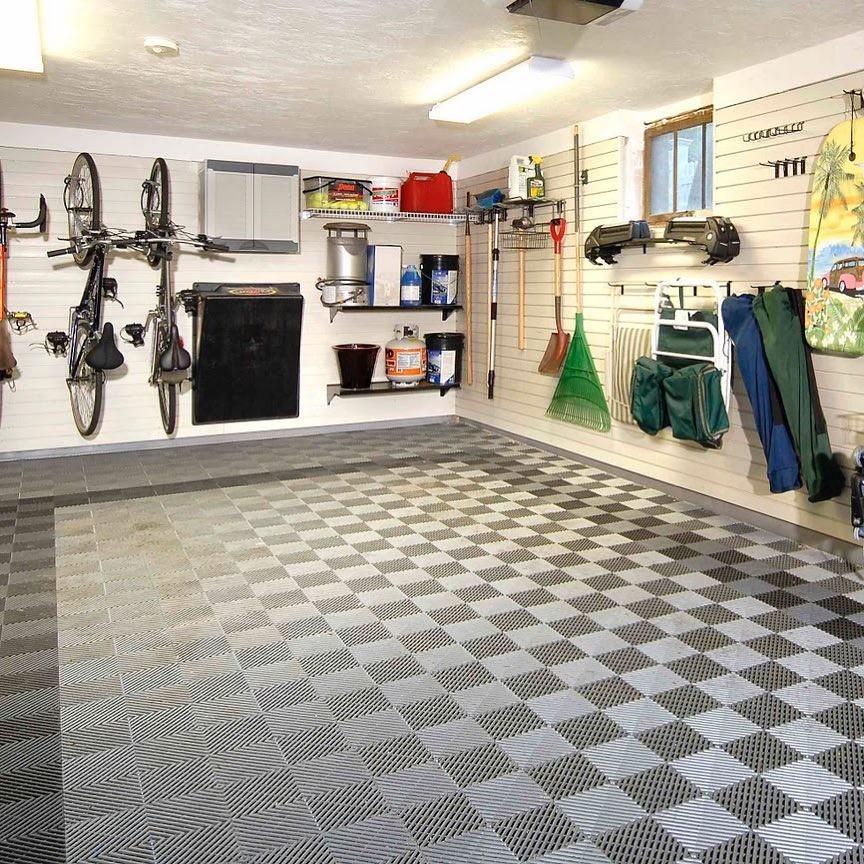 Tools organized and hung up on slat walls inside a garage. @laddertrap
Tools organized and hung up on slat walls inside a garage. @laddertrap
3.3. Cabinets
- Function: Cabinets offer enclosed storage to protect tools and equipment from dust and moisture.
- Benefits: Secure, organized, and aesthetically pleasing.
- Usage: Perfect for storing paint cans, cleaning supplies, and valuable tools.
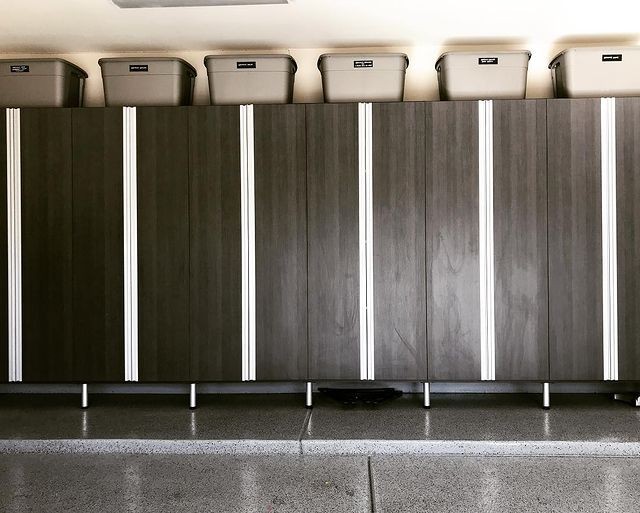 Several larage garage cabinets lined up with sotrage baskets on top. @scottsdaleneat
Several larage garage cabinets lined up with sotrage baskets on top. @scottsdaleneat
3.4. Shelving Units
- Function: Shelving units provide versatile storage for various items.
- Benefits: Cost-effective, easy to assemble, and adaptable to different storage needs.
- Usage: Ideal for storing spare parts, supplies, and seasonal items.
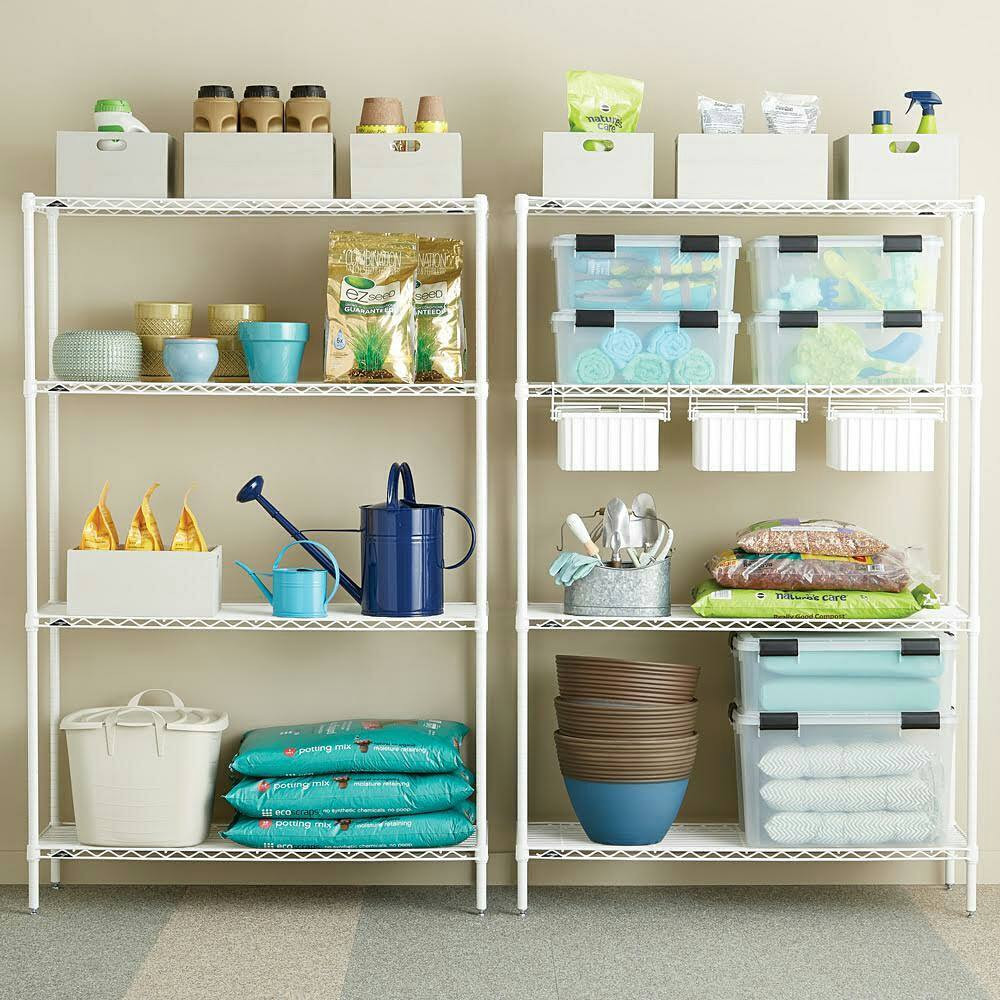 Two wire shelving units that have several items on them. @shoplegacyplace
Two wire shelving units that have several items on them. @shoplegacyplace
3.5. Storage Containers
- Function: Storage containers keep items organized and protected from the elements.
- Benefits: Stackable, durable, and available in various sizes.
- Usage: Suitable for storing seasonal decorations, sports equipment, and hardware.
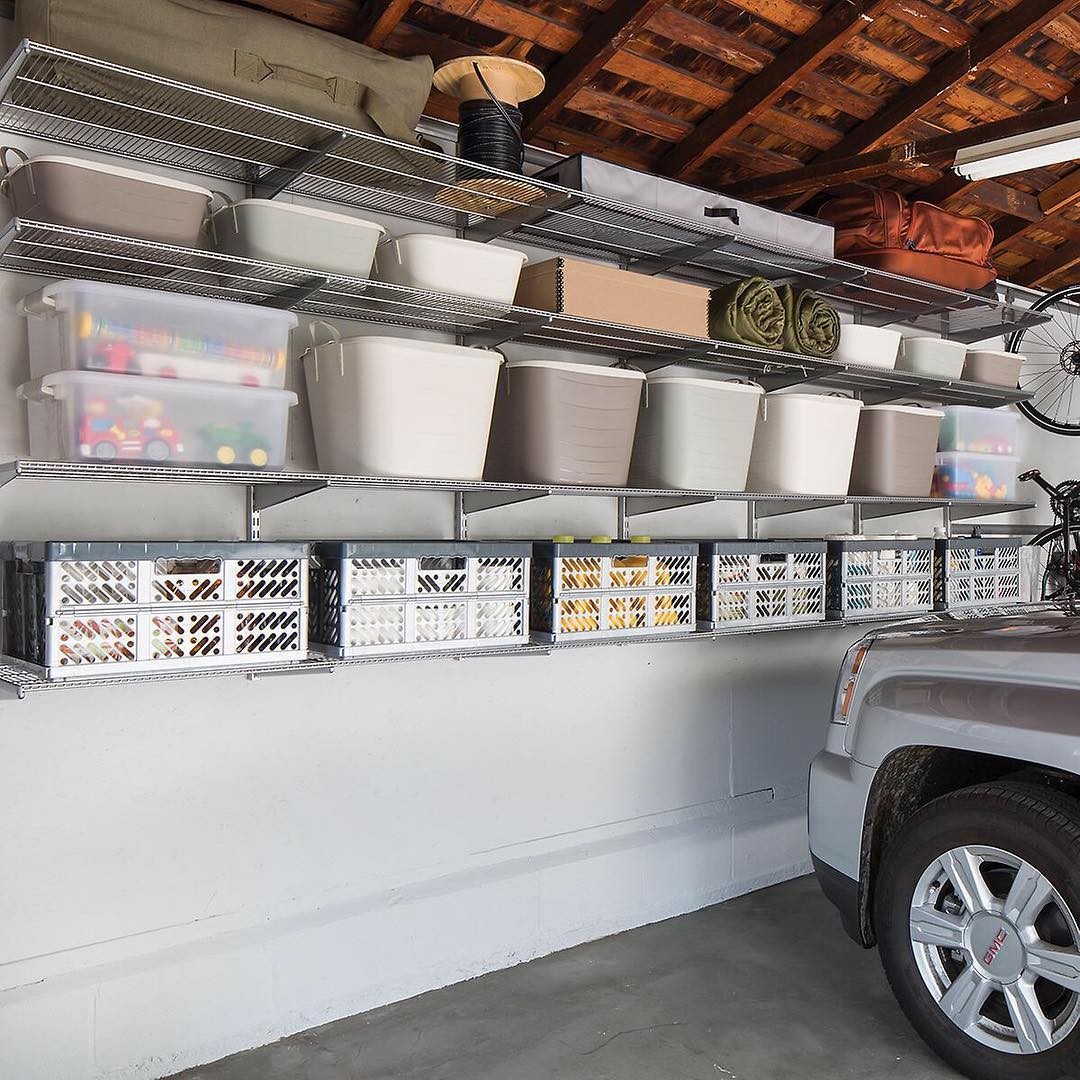 Three shelves filled with storage containers in a garage @thecontainerstore
Three shelves filled with storage containers in a garage @thecontainerstore
3.6. Racks
- Function: Racks are designed for specific items like bikes, ladders, and sports equipment.
- Benefits: Space-saving, secure, and easy to install.
- Usage: Perfect for storing bikes overhead or hanging ladders on the wall.
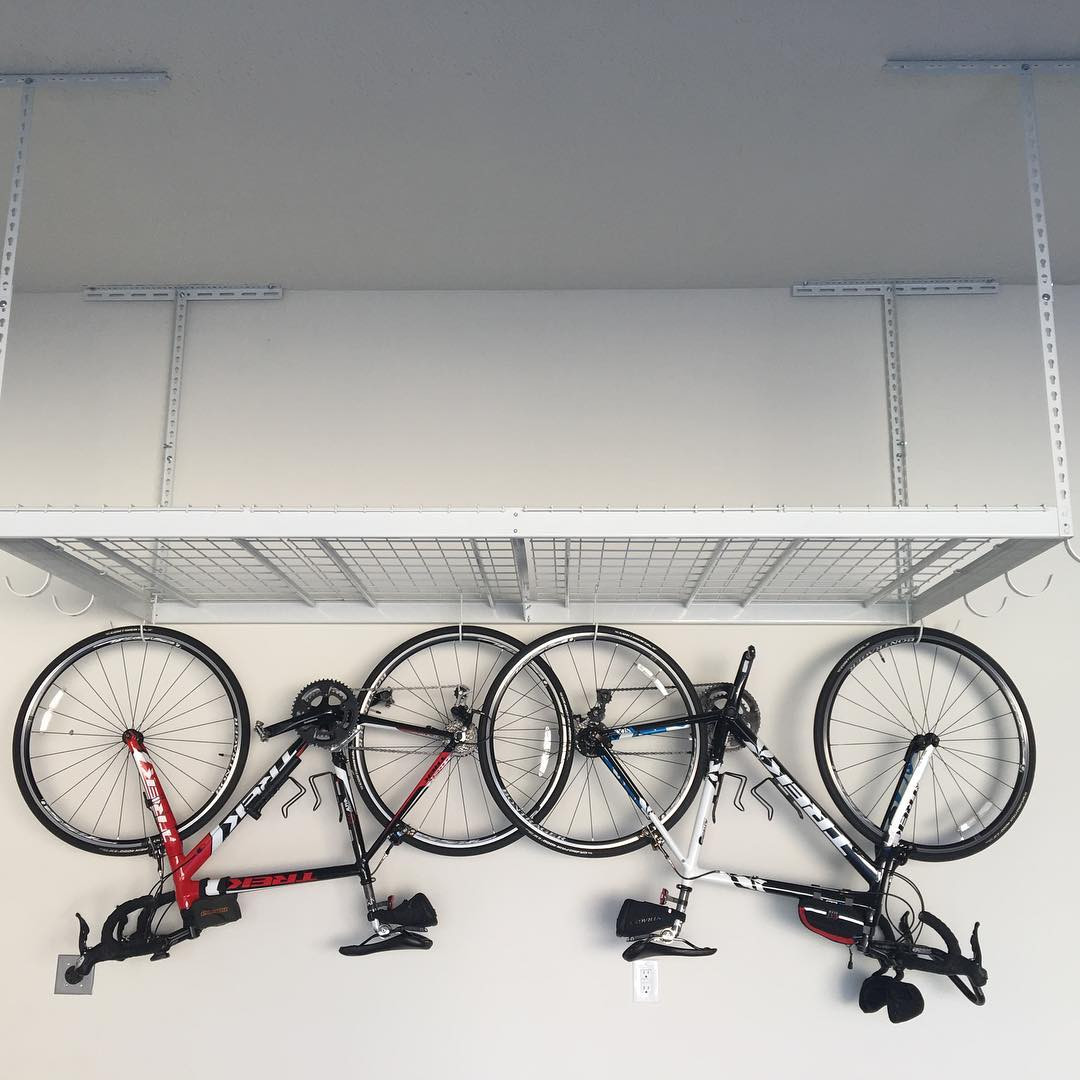 Bikes hung upside down from a storage rack. @lbagley1
Bikes hung upside down from a storage rack. @lbagley1
3.7. Magnetic Strips
- Function: Magnetic strips provide a convenient way to store metal tools.
- Benefits: Space-saving, easy to install, and keeps tools visible and accessible.
- Usage: Ideal for storing screwdrivers, wrenches, and pliers.
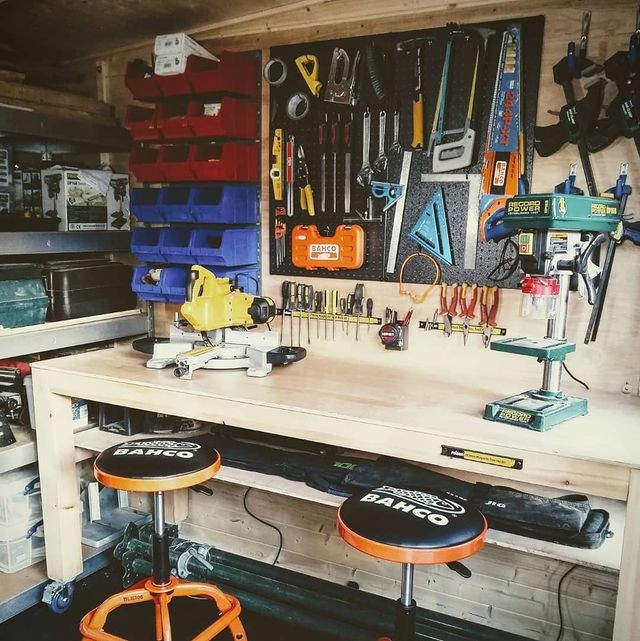 Several tools attached to a garage wall tool board using magnets. @ burwood_build
Several tools attached to a garage wall tool board using magnets. @ burwood_build
3.8. PVC Pipe Organizers
- Function: PVC pipes can be used to create custom organizers for various tools.
- Benefits: Cost-effective, easy to customize, and durable.
- Usage: Suitable for storing long-handled tools, garden equipment, and cords.
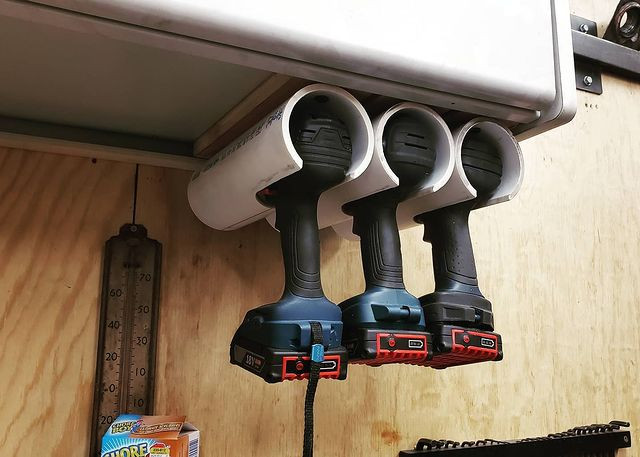 Power tools interested into pvc pipes for garage storage. @brickhousebuilds
Power tools interested into pvc pipes for garage storage. @brickhousebuilds
4. Step-by-Step Guide to Organizing Your Garage Tools and Equipment
Here’s a detailed guide to help you organize your garage tools and equipment effectively.
4.1. Declutter and Clean
- Remove Everything: Start by removing all items from your garage. This allows you to assess what you have and clean the space thoroughly.
- Sort Items: Divide items into categories: keep, donate, sell, and discard. Be ruthless; if you haven’t used something in a year, consider getting rid of it.
- Clean the Garage: Sweep or vacuum the floor, wipe down surfaces, and remove any stains or spills. Consider power washing the floor for a deep clean.
4.2. Plan Your Layout
- Designate Zones: Divide your garage into zones based on function, such as a tool storage area, a workbench area, and a vehicle parking area.
- Optimize Vertical Space: Utilize wall-mounted storage solutions like pegboards, slat walls, and shelves to maximize vertical space.
- Create a Traffic Flow: Ensure there is enough space to move around comfortably, especially when working on projects or parking vehicles.
4.3. Install Storage Solutions
- Mount Pegboards and Slat Walls: Install pegboards and slat walls on the walls to hang tools and equipment. Ensure they are securely mounted to support the weight.
- Assemble Shelving Units: Assemble shelving units and position them along the walls to store bins, containers, and other items.
- Install Cabinets: Install cabinets to store items you want to keep hidden or protected from dust and moisture.
4.4. Organize Your Tools
- Group Similar Tools: Group similar tools together, such as all screwdrivers, wrenches, or power tools.
- Label Everything: Label all bins, containers, and shelves clearly so you can quickly locate items.
- Use Tool Organizers: Use tool organizers like magnetic strips, screwdriver holders, and PVC pipe organizers to keep tools in their designated places.
4.5. Store Equipment Efficiently
- Hang Ladders and Bikes: Use wall-mounted racks to hang ladders and bikes, freeing up floor space.
- Store Lawn Equipment: Store lawn equipment like lawnmowers and trimmers in a designated area, using hooks or pulley systems to keep them off the floor.
- Use Overhead Storage: Consider using overhead storage racks for items you don’t need to access frequently, such as seasonal decorations or sports equipment.
4.6. Maintain Your Organization
- Put Tools Back After Use: Make it a habit to put tools back in their designated places after each use.
- Regularly Declutter: Regularly declutter your garage to prevent it from becoming cluttered again.
- Clean Regularly: Clean your garage regularly to keep it free of dust, dirt, and debris.
5. Optimizing Tool Storage for Different Tool Types
Different tools require different storage solutions to maximize efficiency and protection.
5.1. Hand Tools
- Pegboards: Ideal for hanging screwdrivers, wrenches, pliers, and hammers.
- Magnetic Strips: Perfect for storing metal hand tools like wrenches and screwdrivers.
- Toolboxes: Portable toolboxes are great for keeping hand tools organized and accessible.
5.2. Power Tools
- Slat Walls: Best for hanging heavier power tools like drills, saws, and sanders.
- Cabinets: Provide secure and protected storage for power tools.
- Shelving Units: Suitable for storing power tool cases and accessories.
5.3. Garden Tools
- PVC Pipe Organizers: Perfect for storing long-handled tools like rakes, shovels, and brooms.
- Wall-Mounted Racks: Ideal for hanging garden hoses and other bulky items.
- Wood Pallets: Can be used to create a vertical storage system for small garden tools.
5.4. Automotive Tools
- Rolling Tool Cabinets: Provide mobile storage for automotive tools like wrenches, sockets, and pliers.
- Pegboards: Suitable for hanging frequently used tools.
- Shelving Units: Ideal for storing spare parts and fluids.
5.5. Storage Solutions Statistics
| Tool Type | Recommended Storage Solution | Average Cost |
|---|---|---|
| Hand Tools | Pegboards, Magnetic Strips | $20 – $50 |
| Power Tools | Slat Walls, Cabinets | $100 – $300 |
| Garden Tools | PVC Pipe Organizers, Racks | $30 – $70 |
| Automotive Tools | Rolling Tool Cabinets, Pegboards | $150 – $500 |
Source: Home Improvement Retailers
6. Maintaining Your Tools and Equipment
Regular maintenance is essential to ensure your tools and equipment remain in good working condition and last longer.
6.1. Cleaning
- Clean After Each Use: Clean tools and equipment after each use to remove dirt, grease, and debris.
- Use Appropriate Cleaners: Use appropriate cleaners for different types of tools and equipment.
- Dry Thoroughly: Dry tools and equipment thoroughly before storing them to prevent rust and corrosion.
6.2. Lubrication
- Lubricate Moving Parts: Lubricate moving parts regularly to ensure smooth operation and prevent wear.
- Use Appropriate Lubricants: Use appropriate lubricants for different types of tools and equipment.
- Apply Lubricant Sparingly: Apply lubricant sparingly to avoid attracting dirt and debris.
6.3. Inspection
- Inspect Regularly: Inspect tools and equipment regularly for signs of wear, damage, or corrosion.
- Check for Loose Parts: Check for loose parts and tighten them as needed.
- Replace Worn Parts: Replace worn parts promptly to prevent further damage.
6.4. Calibration
- Calibrate Precision Tools: Calibrate precision tools like torque wrenches and measuring instruments regularly to ensure accuracy.
- Use Calibration Services: Use professional calibration services for tools that require specialized calibration.
6.5. Sharpening
- Sharpen Cutting Tools: Sharpen cutting tools like knives, chisels, and saw blades regularly to maintain their sharpness.
- Use Sharpening Tools: Use appropriate sharpening tools for different types of cutting tools.
- Follow Sharpening Instructions: Follow sharpening instructions carefully to avoid damaging the tools.
6.6. Maintenance Schedules Statistics
| Tool/Equipment | Maintenance Frequency | Key Maintenance Tasks |
|---|---|---|
| Hand Tools | Monthly | Cleaning, lubrication, inspection |
| Power Tools | Quarterly | Cleaning, lubrication, inspection, parts replacement |
| Garden Tools | Seasonally | Cleaning, sharpening, lubrication, inspection |
| Automotive Tools | Annually | Cleaning, calibration, lubrication, inspection, parts replacement |
Source: Tool Manufacturers and Maintenance Experts
7. Safety Considerations for Garage Tool and Equipment Management
Safety should always be a top priority when managing tools and equipment in your garage.
7.1. Personal Protective Equipment (PPE)
- Wear Safety Glasses: Wear safety glasses when working with power tools or performing tasks that may generate debris.
- Use Gloves: Use gloves to protect your hands from cuts, abrasions, and chemicals.
- Wear Hearing Protection: Wear hearing protection when using loud power tools.
- Use a Dust Mask: Use a dust mask when working with materials that generate dust.
7.2. Safe Storage Practices
- Store Tools Properly: Store tools in their designated places to prevent accidents.
- Secure Heavy Items: Secure heavy items to prevent them from falling.
- Keep Sharp Tools Covered: Keep sharp tools covered or sheathed when not in use.
- Store Flammable Materials Safely: Store flammable materials in a well-ventilated area, away from heat and ignition sources.
7.3. Electrical Safety
- Use Grounded Outlets: Use grounded outlets for power tools and equipment.
- Check Cords for Damage: Check cords for damage before each use and replace them if necessary.
- Avoid Overloading Circuits: Avoid overloading electrical circuits.
- Unplug Tools When Not in Use: Unplug tools when not in use to prevent accidental activation.
7.4. Ventilation
- Ensure Proper Ventilation: Ensure proper ventilation when working with chemicals or power tools that generate fumes.
- Use a Fan: Use a fan to circulate air and remove fumes.
- Work Outdoors: When possible, work outdoors to minimize exposure to fumes.
7.5. First Aid
- Keep a First Aid Kit: Keep a well-stocked first aid kit in your garage.
- Know Basic First Aid: Know basic first aid procedures for treating cuts, burns, and other injuries.
- Seek Medical Attention: Seek medical attention for serious injuries.
8. Innovative Garage Tool and Equipment Management Solutions
Explore some innovative solutions to further enhance your garage organization.
8.1. Smart Garage Systems
- Smart Storage Cabinets: Use smart storage cabinets with built-in organizers and electronic locks for secure tool storage.
- Automated Tool Tracking: Implement an automated tool tracking system using RFID tags or barcodes to monitor tool usage and location.
- Voice-Activated Control: Use voice-activated control systems to operate garage doors, lights, and other equipment.
8.2. Mobile Workstations
- Rolling Workbenches: Use rolling workbenches with built-in storage and power outlets to create a mobile workstation.
- Portable Tool Chests: Use portable tool chests to transport tools to different work areas.
- Collapsible Work Tables: Use collapsible work tables for temporary workspaces.
8.3. DIY Storage Solutions
- Repurposed Furniture: Repurpose old furniture like dressers, cabinets, and bookshelves to create custom storage solutions.
- Pallet Projects: Use wood pallets to build storage racks, shelves, and workbenches.
- PVC Pipe Projects: Use PVC pipe to create tool organizers, storage bins, and cord management systems.
9. Garage Tool and Equipment Management for Professional Mechanics
Professional mechanics require a highly organized and efficient garage to ensure productivity and client satisfaction.
9.1. Tool Accountability
- Tool Inventory System: Implement a tool inventory system to track all tools and equipment.
- Shadow Boards: Use shadow boards to quickly identify missing tools.
- Tool Check-Out System: Implement a tool check-out system to track tool usage and accountability.
9.2. Workstation Optimization
- Ergonomic Workstations: Design ergonomic workstations to reduce strain and improve productivity.
- Adjustable Work Surfaces: Use adjustable work surfaces to accommodate different tasks and user heights.
- Task Lighting: Provide adequate task lighting to improve visibility and reduce eye strain.
9.3. Safety Compliance
- OSHA Compliance: Ensure compliance with OSHA regulations for garage safety.
- Hazard Communication: Implement a hazard communication program to inform employees about the hazards of chemicals and materials used in the garage.
- Emergency Preparedness: Develop an emergency preparedness plan to address potential hazards like fires, spills, and injuries.
9.4. Professional Statistics
| Metric | Average Value | Impact on Business |
|---|---|---|
| Tool Inventory Accuracy | 98% | Reduces tool loss, improves efficiency |
| Workstation Ergonomics | Compliant with OSHA | Reduces employee injuries, increases productivity |
| Customer Satisfaction | 4.8/5 stars | Enhances reputation, attracts more clients |
Source: Automotive Repair Industry Surveys
10. Why Choose CARDIAGTECH.NET for Your Garage Tool Needs?
CARDIAGTECH.NET offers a wide range of high-quality tools and equipment designed to meet the needs of both DIY enthusiasts and professional mechanics. Here’s why you should choose CARDIAGTECH.NET:
- High-Quality Products: We offer tools and equipment made from durable materials to ensure long-lasting performance.
- Wide Selection: We offer a wide selection of tools and equipment to meet all your garage needs.
- Competitive Prices: We offer competitive prices to help you save money on your tool purchases.
- Expert Advice: Our team of experts can provide advice and guidance to help you choose the right tools for your needs.
- Excellent Customer Service: We are committed to providing excellent customer service and ensuring your satisfaction.
Contact CARDIAGTECH.NET today at 276 Reock St, City of Orange, NJ 07050, United States or call us at +1 (641) 206-8880 to learn more about our products and services. Visit our website at CARDIAGTECH.NET to browse our online catalog and place your order.
FAQ: Garage Tool and Equipment Management
1. What is the best way to store hand tools in a garage?
The best way to store hand tools is using pegboards, magnetic strips, or toolboxes. Pegboards are ideal for hanging screwdrivers, wrenches, and pliers, while magnetic strips are perfect for storing metal hand tools. Toolboxes provide portable and organized storage.
2. How can I maximize vertical space in my garage for tool storage?
To maximize vertical space, use wall-mounted storage solutions like pegboards, slat walls, and shelves. These allow you to store tools and equipment off the floor, freeing up valuable space.
3. What is the best way to store power tools in a garage?
The best way to store power tools is using slat walls, cabinets, or shelving units. Slat walls are great for hanging heavier power tools, while cabinets provide secure and protected storage. Shelving units are suitable for storing power tool cases and accessories.
4. How often should I clean and maintain my garage tools?
You should clean your garage tools after each use to remove dirt and grease. Regularly lubricate moving parts and inspect tools for signs of wear or damage. Sharpen cutting tools as needed to maintain their sharpness.
5. What safety precautions should I take when managing tools in my garage?
Always wear safety glasses, gloves, hearing protection, and a dust mask when working with tools. Store tools properly, secure heavy items, and keep sharp tools covered. Ensure proper ventilation and keep a first aid kit in your garage.
6. How can I organize small hardware items like nails and screws?
Organize small hardware items using storage containers with labels, repurposed library card catalogs, or tackle boxes with compartments. You can also build a wall-mounted swivel rack to create a bolt organizer.
7. What are some DIY storage solutions for garage tools?
Some DIY storage solutions include repurposing old furniture, building storage racks from wood pallets, and creating tool organizers from PVC pipes.
8. How can I ensure tool accountability in a professional mechanic’s garage?
Implement a tool inventory system to track all tools and equipment. Use shadow boards to quickly identify missing tools and implement a tool check-out system to track tool usage and accountability.
9. What should I consider when designing an ergonomic workstation in my garage?
Design ergonomic workstations to reduce strain and improve productivity. Use adjustable work surfaces to accommodate different tasks and user heights. Provide adequate task lighting to improve visibility.
10. What makes CARDIAGTECH.NET a good choice for purchasing garage tools and equipment?
CARDIAGTECH.NET offers high-quality products, a wide selection of tools and equipment, competitive prices, expert advice, and excellent customer service to meet all your garage needs.
Managing your garage tools and equipment effectively not only enhances your efficiency but also ensures safety and prolongs the life of your tools. By implementing the strategies outlined in this guide and choosing high-quality tools from CARDIAGTECH.NET, you can transform your garage into an organized and productive workspace. Remember to declutter regularly, maintain your tools, and prioritize safety to keep your garage a safe and efficient environment for all your projects.



